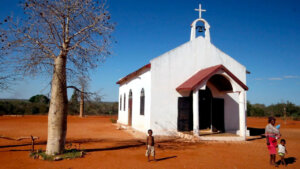
We’re off to Indonesia to discover the fascinating death practices of the Toraja of South Sulawesi. Starting off with their animist beliefs, we learn what death means to this ethnic group. In addition to that, Torajan funerals reflect their unique approach to death: tree and sky burials and exhumating the dead are just two of the many fascinating topics of this article. Last but certainly not least, we highlight the Ma’Nene ritual, a Torajan testament of family bonds existing beyond death.
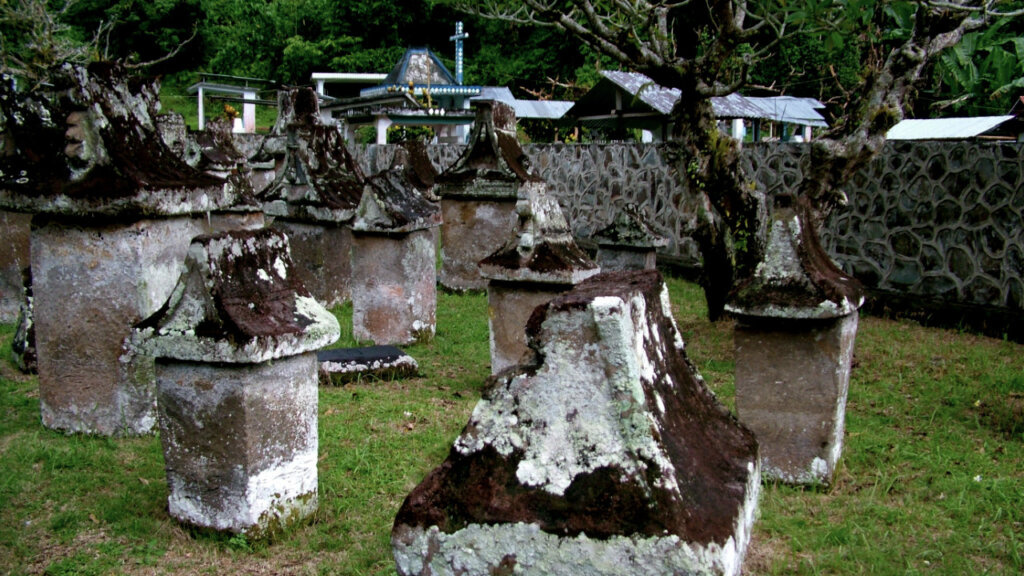
The Minahasan People of North Sulawesi used a specific kind of sarcophagus, called a waruga. It was made of stone and the deceased inside always faced North. However, the then-ruling Dutch authorities outlawed the death practice. As a result the Minahasa began using coffins. However this is not the most famous death practice that takes place in Sulawesi. That would be the death and funeral practices of the Toraja.
The Torajans are the indigenous people of South Sulawesi, most of them residing in the Tana Toraja or the Land of Toraja. Most Torajans are Christian and another part of them is Muslim. However, many Toraja follow the Aluk To Dolo or Way of the Ancestors, often in combination with their religions. The Aluk is a system of animistic beliefs that has existed since ancient times in the Toraja society.
Furthermore, the Torajans have an extremely elaborate approach to death and funerals. These death rites are even more important for Torajans than weddings or giving birth! For example, the Aluk dictates that only noble members of the society can have the most extended, lavish version of a funeral. Moreover, over a thousand people may attend a noble funeral, lasting many days. Finally, Toraja mortuary ceremonies can be so expensive that the family may need months or years to raise the funds necessary.
Toraja animism supports that there is no such thing as a sudden death. On the contrary, death is not an event but a process. Torajans see death as a journey to Puya which refers to the afterlife. The soul cannot start its journey to Puya however unless the proper funeral rituals are complete. Torajans keep the body protected and preserve it by engulfing it in cloth. Additionally, the soul is still on earth, usually staying in the village of the deceased. After this waiting period the funeral ceremonies take place, and only then can the soul finally start its journey to Puya.
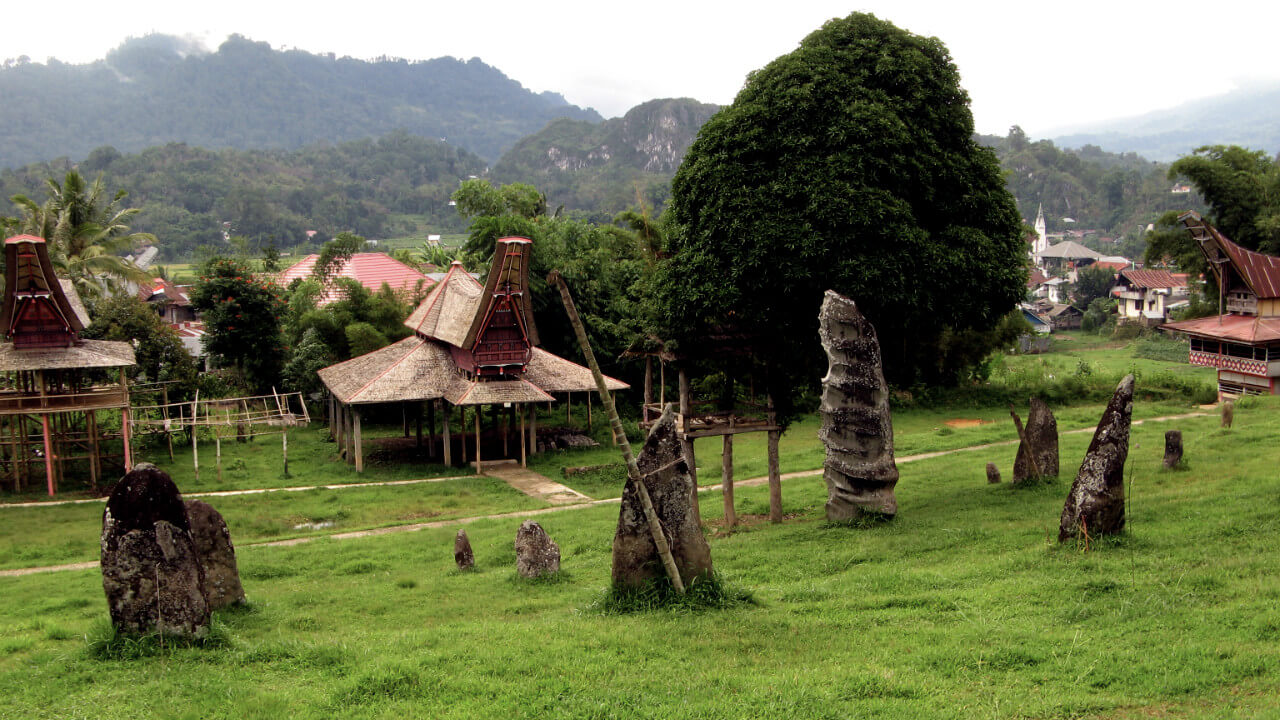
Next we discuss the two main phases of the death ritual of the Toraja: the funeral ceremony (‘Rambu Solo’) and the procession and eventual burial of the deceased (‘Rambu Tuka’).
A Toraja funeral ceremony often includes flute music and poems, while chanting and wailing. These rites, though, are not present if the deceased is a young child or a poor adult. For the rest, though, a lavish death feast is to be expected. Villagers often build bamboo platforms where they can hold the death feast. They usually place the deceased at the highest spot. Alternatively, there are special funeral sites for some Toraja who use megaliths to mark this territory as a funeral site.
An important element of the funeral ceremonies are animal sacrifices. Specifically, water buffaloes are killed and its exact number depends on the status of the deceased. The dead water buffaloes are then placed next to each other so the deceased can use them. This is a direct result of Aluk death beliefs. Specifically, water buffaloes are important because they can accelerate the journey to Puya. It is significant that the blood of the buffaloes touches the earth. At the same time young boys may try to collect squirting blood in bamboo tubes as it is considered sacred.
Another crucial component of the death ceremony are the cockfights (‘bulangan londong’) that take place. The same principle of sacred blood touching the earth is present here too. At least three chickens have to die during this ritual according to traditions but it is often more than 25 couples of cocks that are going to kill each other during the cockfights.
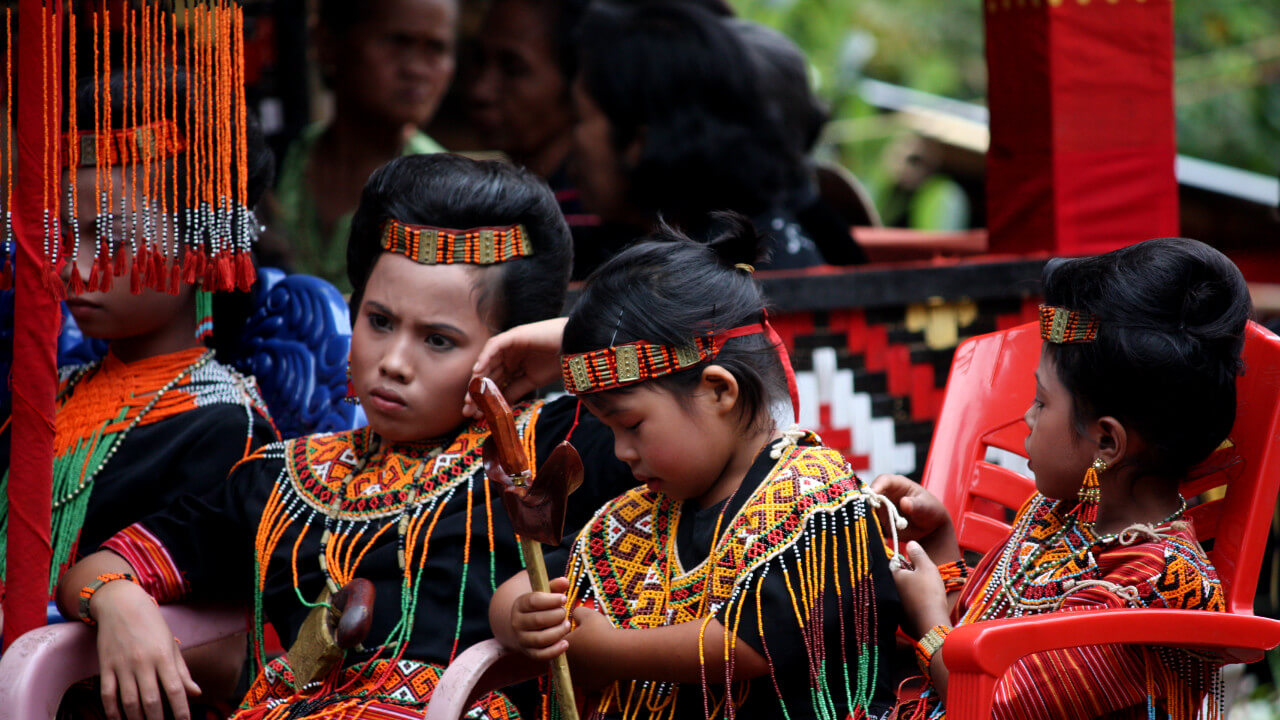
The procession only begins when all the death ceremonies have been successfully performed. Rambu Tuka, as this phase of the rituals is also called, begins at the house of the deceased. Torajans then place the body on an enormous palanquin (roughly the size of a small house!) and transfer the body to the burial site. Women wear black and golden dresses, while men usually have colored shirts on. Torajans may also attempt to try to touch the corpse. In some cases they end up even knocking the corpse out of the coffin by pushing the palanquin too hard.
Once the procession arrives at the burial site the next stage begins. Moreover, Torajans choose one of the following three burial methods: they may find a cave to place the corpse. Alternatively, they carve a grave into large stones. Finally, they may use sky burials by hanging the coffins at a cliff side. The wealthy most of the time opt for a carved grave.
A particularly fascinating burial custom is about the tree burials. This practice takes place only for children or infants. The coffin of the children are hung with ropes and they are never taken down. Instead, Torajans wait until the years pass and the ropes decay so much that the coffin falls. Torajans have to also find an ‘innocent’ tree, since the young ones were innocent too.
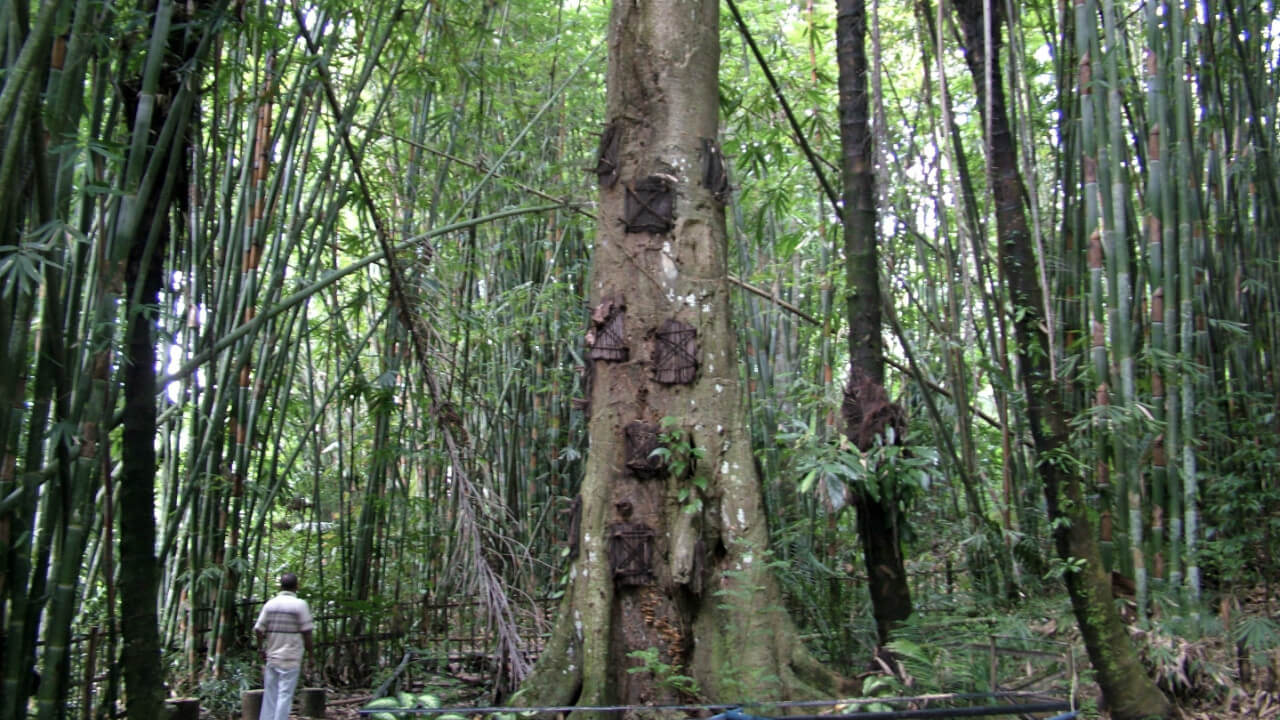
Once the burial is complete, Torajans often use effigies, named Tau tau, carved out of wood. Although these effigies are an animist practice, both Christian and animist Toraja honor them. Torajas started using Tau tau around the end of the 19th century. While originally their design was quite simplistic, now they can be very detailed.
The clothing of the Tau tau is of significance too and Torajans redress them every couple of years. Male effigies are wearing turbans while female ones have their ears pierced. In addition to that, the effigies are based on the appearance of the dead around the time of their death.
Nowadays unfortunately not many Torajans choose to use Tau tau at their relatives’ tombs. This is so due to thieves consistently stealing the effigies from the stone graves. As a result, many Tau tau have become available for purchase for rich art collectors. Therefore, families now often choose to keep Tau tau at home instead.
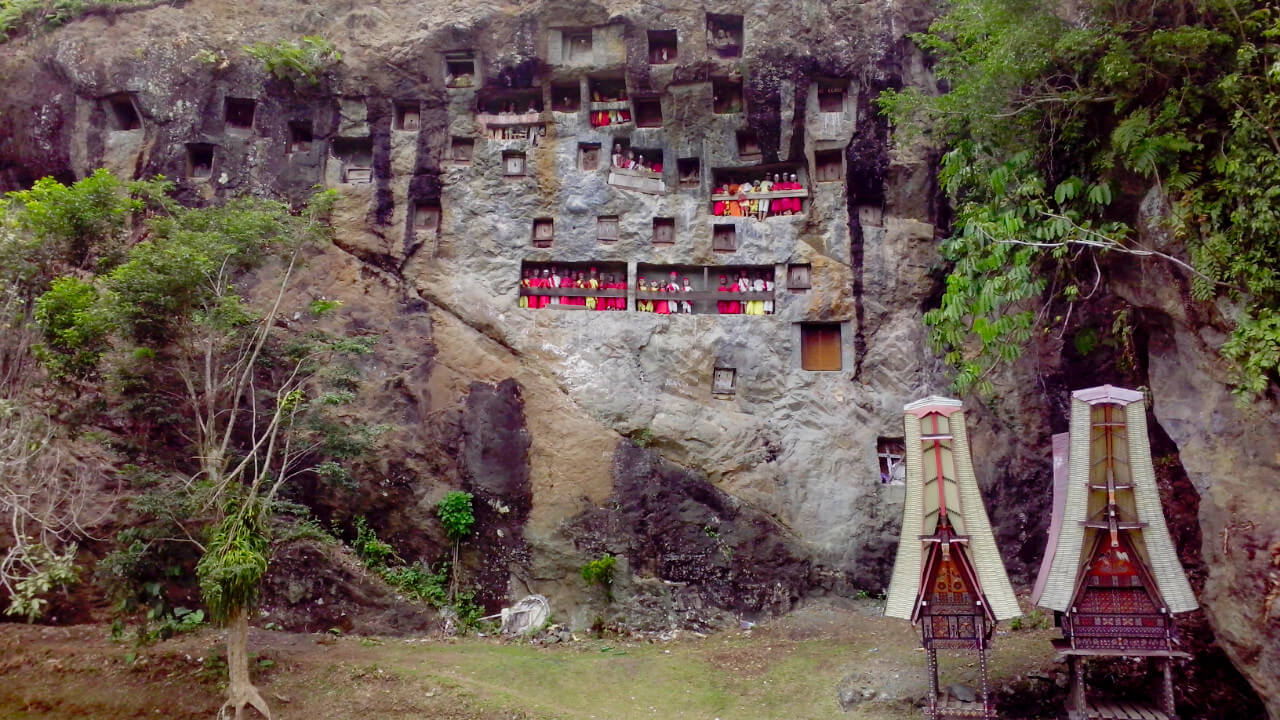
The most famous Torajan death practice is the Ma’Nene ritual. This worldwide famous custom has been mistakenly called the walking dead. It is an annual ritual taking place every August and to many westerners it may look peculiar. Torajans exhumate their dead and take care of their appearance. That does not just mean that they wash them and groom them, but also that they even redress them. Outside the context of local animism that may even seem disrespectful to the dead, but for Torajans Ma’Nene is the exact opposite: Giving them new clothes, makes the dead still relevant in their society, a great symbol of respect.
In addition to that, if any coffin or box containing the dead is damaged the Torajans repair it. Furthermore, they do not immediately bury their dead again. Instead they often parade the corpses or place them on chairs. Often relatives buy cigarettes or accessories for their dead relatives. That was the reason that the custom was often referred to as the walking dead.
Furthermore, relatives often travel to the village performing the ritual from distant regions too. Therefore, the Ma’Nene ritual is a great opportunity for different generations and new members of the family to get to know each other. And for the Torajans that includes the dead too.
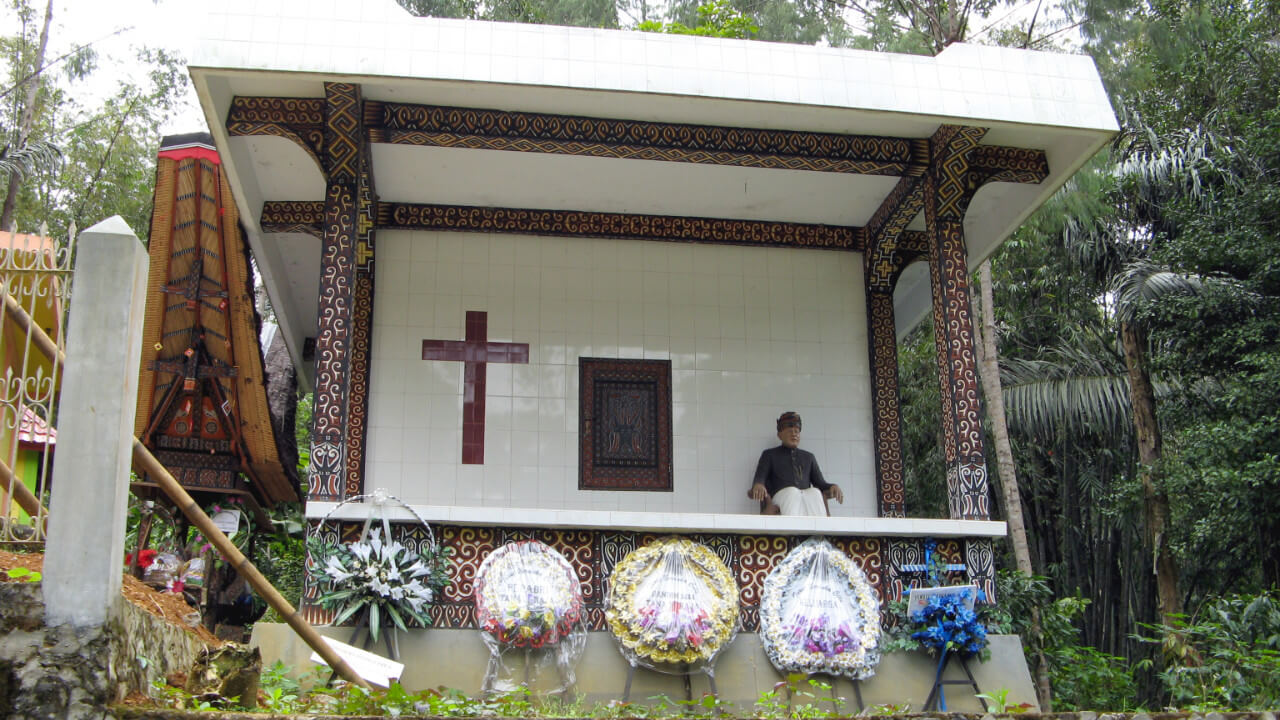
We hope you learned something new regarding this country’s death practices!
If you want know more about Indonesian funeral practices, check out our main article on the Indonesian archipelago! For other Southeast Asian countries have a look at our articles on Thailand and the Philippines.
Other customs that involve spending time with the dead is the Famadihana of Madagascar and of course the Day of the Dead in Mexico.